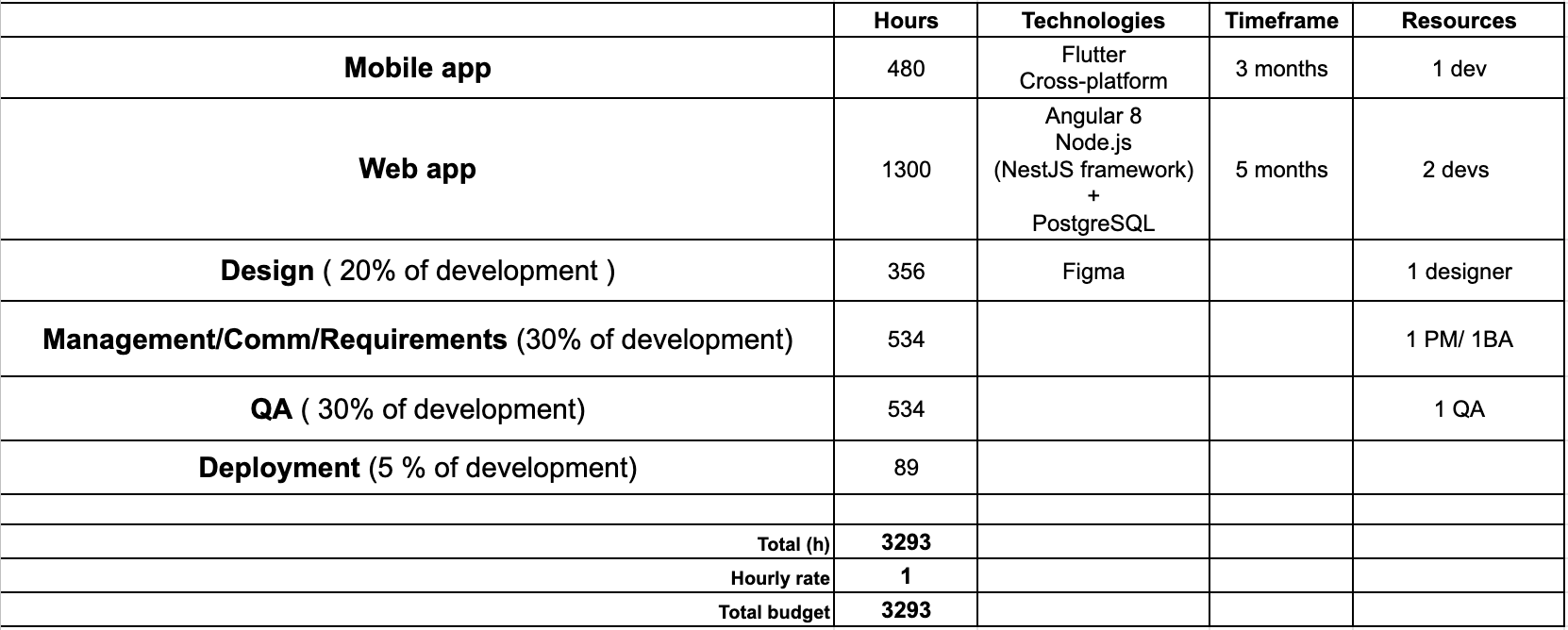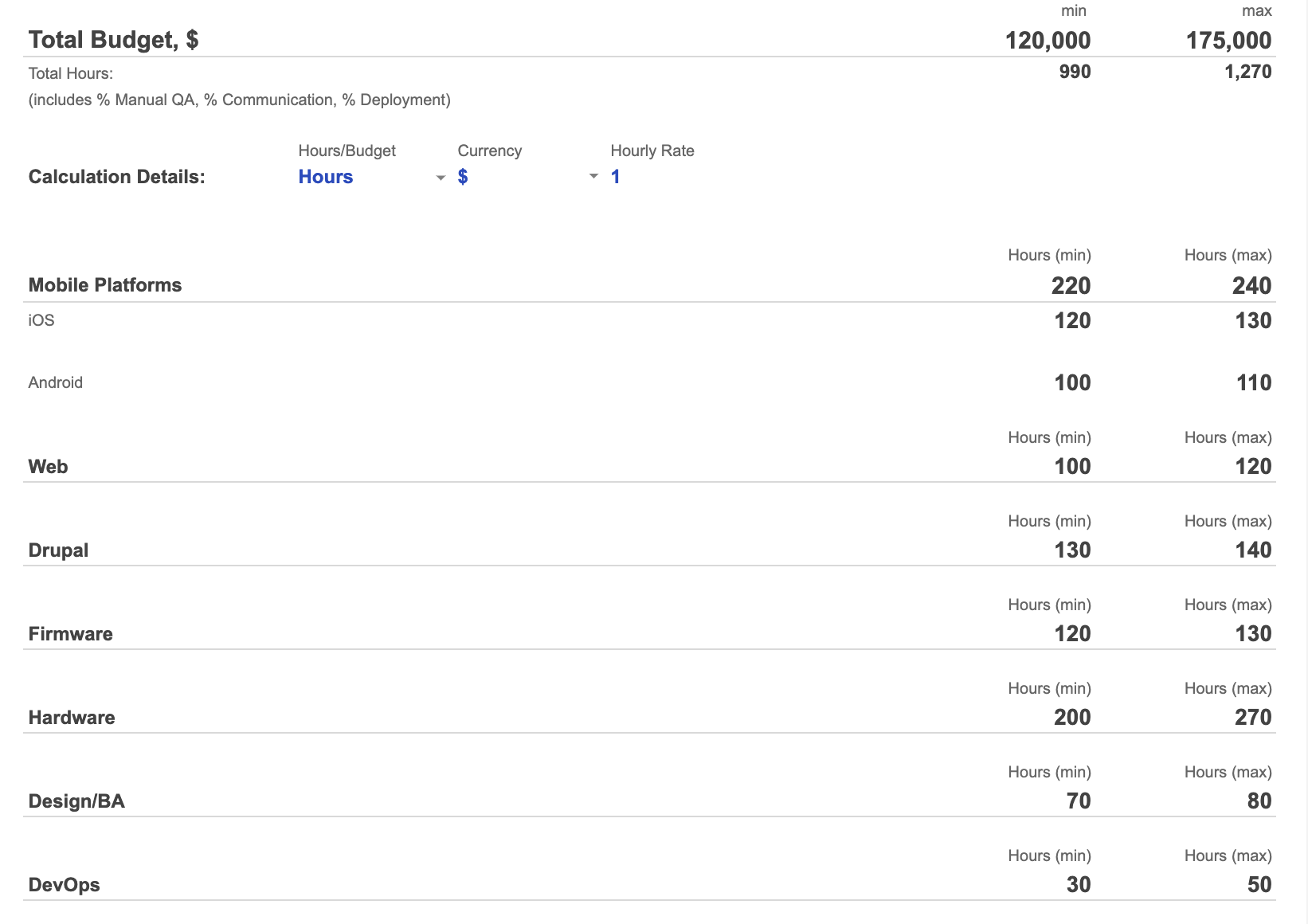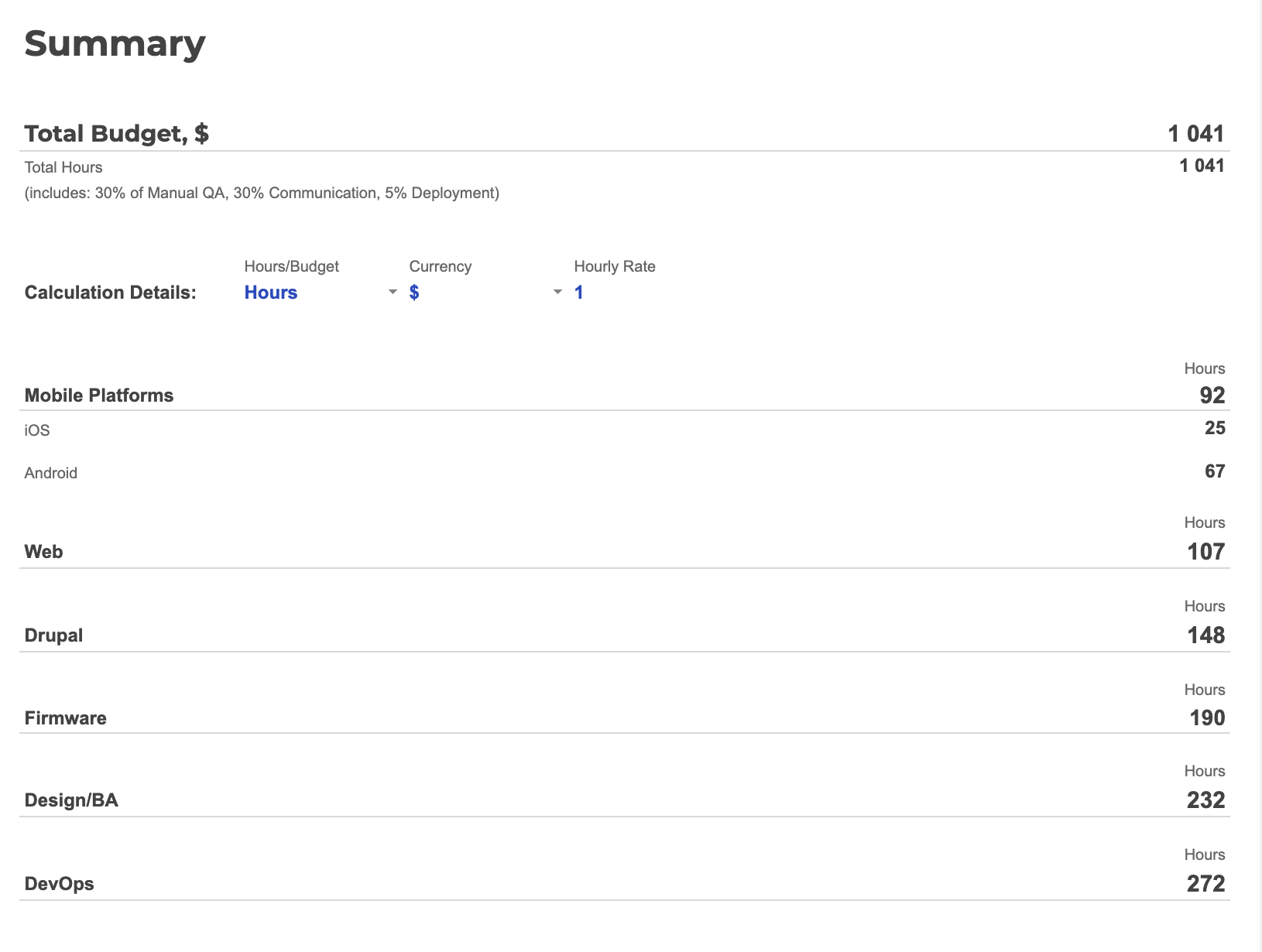Accurate project software or hardware project cost estimation is oftentimes what makes or breaks a project. It’s essential to plan your product roadmap and budget properly. Both software development vendors and customers need it.
The more information about the project duration and price tag, the fewer uncertainties and risks loom over your head.
In a recent report, the PMI stated that inaccurate IT project cost estimates and task time estimates are among the top reasons for project failure, 28% and 26% respectively. One thing is clear: solid project estimation is a pivotal component that contributes to the overall project and company success.
This guide shares the essentials of project estimation. Learn how to estimate IT project cost accurately and what methods to use to set realistic expectations.
What is an IT project cost estimation?
Project estimation is an integral part of any project planning stage. You need it whether you are a startup developing a product prototype, a scaleup upgrading your current services, or an established company interested in developing a new product.

It is not only about accurate software or hardware development cost estimation. It also reduces uncertainties, enables creative approaches, and a start to the actionable game plan you the result of which is a high-quality solution.
Besides, the cost estimation process is a good way to validate your potential development company and see how good they are at understanding your business needs, not just specs, how experienced they are in your domain, and how mindful they are about suggesting relevant solutions.
Project estimation answers the top product discovery questions
What are the first questions you, as a business owner, should be concerned about when launching a project?
- What should we build in the initial version?
- How much is this going to cost the company?
- How much time will it take to bring the project to the finish line?
The good news is that project estimation will answer all those questions and give you a general understanding of what it will take to get the project to success. You basically get through the standard PM triangle: Scope, Cost, and Timeline.
What details you need to provide for project estimation
Effective project estimation is a two-way street. The more input you can provide to the IT vendor, the more accurate the final software cost estimation or hardware cost estimation will be.
So what information or details should you prepare to help your future development team make a solid estimate? Here’s a rough sketch of a best-case scenario, but you can get a good estimation even if you are lacking some points on the list:
- Business idea
- Project goals and objectives
- Target industry and audience
- Features/epics, user/job stories
- User flow diagrams
- Wireframes, mockups, interactive prototypes
Two main approaches to the IT project estimation process
The estimation approach at Lemberg Solutions depends on the scope of the available information regarding the future product. Commonly, we offer two options.
Brief project overview
You send a brief overview of your project and RFQ/RFP if these docs are available to speed up the idea elaboration and requirements definition. After that, our business development manager will contact you to discuss the received information. They also ask for the lacking project information to get through the dev team feedback round and then agree on the following steps with you.
Then, we provide you with a ballpark estimation of the project if the requirements are clear, an example of which we will show you further in this article. If the available project information is incomplete but you still need to get a rough estimate in a short period of time, then we offer the ROM estimation method.
Project analysis and discovery
We conduct a discovery phase in order to dive deeper into the project specifics and figure out the technical requirements of the future holistic product. This phase typically takes 4 weeks of initial preparation, intense brainstorming sessions, and solution discussions.
As a result, you get a narrow range of estimated hours and a timeline demonstrating when the MVP will be delivered, which you can use in your roadmap and finance planning. As the discovery stage is completed, we also provide you with a ballpark estimate.
There are also cases when we are engaged in a UI/UX Design Phase (about 1 month of work) to discuss and build final designs for user interfaces. It will create a solid ground to give you a fixed cost estimate and get commitments with certain deadlines. This phase includes a detailed estimation of the project as a result.
IT project estimation methods: ROM, ballpark, detailed
There are several types of development project estimates and the one you need is usually determined by the definition of your project and the amount of information you grant to the development team. Let’s take a look at the most common methods of estimates which we also backed with IT project cost estimation templates.
ROM — Rough Order of Magnitude
If you don’t have many details regarding the product you need, and your business idea is the main driver in the process, ROM is just for you. With some high-level requirements and references to existing projects, the development team should be able to give you sufficient information to make a decision on whether it makes sense for you to move forward with the project.
You will know an approximate number of development hours that will be needed to cover the project, what technologies will be involved in the process, what time frame is realistic to complete the project, and what kind of resources and finances you will need to build your product.

If you have only high-level requirements but want your project estimation to be fairly detailed, we might offer you the option to go through a discovery phase.
This is a series of workshops and brainstorming sessions with the following deliverables and outcomes:
- business needs and key KPIs
- user persona, user stories
- functional and non-functional requirements
- technical solution and architecture
- low fidelity wireframes
- ballpark estimate and timeline
Ballpark project estimation
The ballpark estimate works best for companies that have a business idea, basic user flows, high-level requirements, and low-fidelity wireframes.
Perhaps, you are a startup or you have already tried implementing your ideas, but something went wrong so you are looking for a team of tech experts to help you out.

If such a scenario sounds familiar, the development team will give you a ballpark verdict with an approximate software development cost estimation or hardware development cost estimation, including the required hours for each component of the project to be developed and the project timeline that shows when and what features will be done.
At the end of the estimation process, you will have more certainty to decide whether you want to move forward with the project.
Detailed software cost estimation
The name of this estimation method speaks for itself: it’s highly detailed.
This is a popular approach if you are already working with a vendor and decide to take on a new milestone. However, to get such an estimate, you need to have established business logic, user flow diagrams, a defined features list, wireframes, mockups, or a clickable UI/UX prototype.

With all that information at hand, the development team should provide you with software cost estimation or hardware cost estimation, along with the timelines, activities, and materials that will be used when developing the project. And the cherry on top — you’ll get a precise number of hours that are required to develop each component or feature of the project.
Tips on what makes a good project estimate
How to ensure the cost estimate process flows smoothly and relevantly for your project? Here are the key tips to consider and monitor.
Fit your project needs and give clarity
The type of estimation should match your particular state of the project: is it just a business idea or a well-defined project that only requires additional resources? A good project estimation process should answer your current questions, give some clarity on how feasible the plan is, and what kind of investments you’re looking at.
Ask the same team to complete the estimate and development
Ideally, you should have the project estimated by the team that will develop it. That way, there will be fewer uncertainties, and you will spend less time on communication and onboarding new people on what you want to develop with your project.
But there is another reason for it. If the team that estimates your project cannot implement it, you know you're looking at a red flag. Perhaps there’s something wrong with the estimation and you need to be extra vigilant with the quality of your ballpark numbers.
Account for potential overhead costs
Whether you’re dealing with software development cost estimation or hardware development cost estimation, it’s not just the development hours that the project manager should add to the price tag. It’s crucial that they also account for overheads and give you a realistic estimate from day one. After all, development projects are never just about development. They are also about team communication, brainstorming sessions, testing rounds, etc.
To make sure your estimate is accurate, try to answer these questions:
- Is QA testing included in the overhead costs (it usually takes around 30%)?
- Are communication hours mentioned (they can also add approximately 30%)?
- Is deployment on the list (about 5%)?
Having your overhead costs described in detail early on will save you from looking at eye-watering invoices when the project gets finished.
Look for creative and efficient solutions
The goal of a solid estimation process is not only to give you a rough idea of how much and how long the development process will take, but also to do some optimization and look for creative ways to deliver the project within a reasonable time and budget.
There is no perfect formula for all kinds of project estimations. That is why we keep the individual approach to each case to provide you with expected results that will correlate with your initial requirements and expectations regarding our estimation process.
How we do project estimation at Lemberg Solutions
With over 14 years of experience in IT, we know the best practices of how to estimate development projects from the inside out. Slavic Voitovych, our Head of IoT Business Development, knows exactly why companies want to have Lemberg Solutions estimate their projects:
What Lemberg’s clients love most about our project estimation style is that we go deep into the project scope, break it down into separate user-oriented features (functional requirements), and take a close look at project architecture and infrastructure (non-functional requirements), which leads to highly detailed and accurate estimates.

Our team follows all the strategic estimation phases, but there are also a few reasons why we’re better than other IT vendors:
- Get a realistic “from-to” range instead of a guess — we tell you what items impact your financial outcome and what to do to narrow the budget or what perks you get if you expand it;
- Get your projects scoped out with relevant tech stack — we set project priorities in a way to outline the precise timeline and cut the duration of the development process, picking the technology and frameworks that fit your projects best
- Get a cross-functional team with relevant past experience — the whole team including the account manager, PM, BA, tech lead, and engineers will work on your project estimation to deliver accurate results.
Stefan Weiss, CEO at Straffr, talked about Lemberg’s approach to project estimation in a recent review:
Working with Lemberg Solutions was one of the best experiences we had…[The team] developed an Android app for us. First, they analyzed the functionalities of our iOS version of the app and provided feedback to clarify the scope of building the Android version. Then, they came up with an estimated budget, which helped us move forward with our specific goals for the app. Once we were clear on the budget, they started building the app.
Final thoughts
Project cost estimation is oftentimes a slippery slope that only top experts can manage. Many factors can derail a project and make your initial estimation irrelevant, especially if you overlook them when calculating the project.
This is why having a team of seasoned tech professionals to estimate your project is a must. If you are interested in collaborating with experts who are highly proficient in IT project estimating, feel free to contact us.
